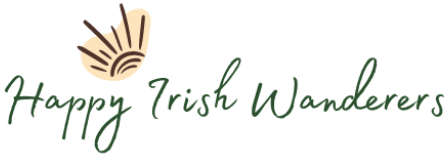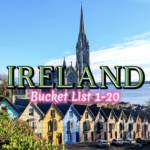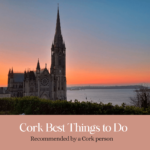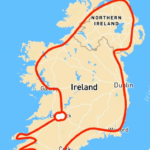Last updated on May 15th, 2025 at 04:49 pm
Did you know that Ireland’s Celtic history is among the world’s oldest, with human presence on the island dating back over 9,000 years!!
Nearly 1000 years before the construction of Stonehenge and the Great Pyramids of Giza, Ireland was a center of activity during the Neolithic period. During this time, early Celtic settlers built impressive structures such as the iconic megalithic sites like Newgrange, one of two UNESCO World Heritage sites in Ireland (the other UNESCO World Heritage being Skellig Islands in County Kerry, made even more famous by the Star Wars franchise).
Have we gotten your attention yet?! Pretty impressive right?!
These days the rich tradition of Celtic culture and mythology, especially its Celtic symbols and art is still visible all over Ireland. But also in other Celtic regions such as Scotland, Wales, Cornwall, the Brittany region in France, and the northern areas of Spain.
This Ireland mythology guide will showcase and the very best Irish symbols and Celtic designs will take you through the Celtic history of Ireland, delving into the meaning of these ancient icons that are sure to blow your mind.
Happy Irish Wanderers are a couple from….Ireland (Surprising right!) and we are beyond passionate about sharing our love and knowledge of Irish heritage. So get ready for one epic Irish symbol guide.
How about you learn about Irish symbols while EXPLORING IRELAND?! Find your ultimate tour of Ireland with various itineraries and budgets to suit all needs – you can even create your own itinerary to experience a uniquely tailored trip that is planned, managed, and personally delivered by a passionate team of Celtic Experts. Quick while there is currently 15% off!!
Why Do I Need to Know About Irish Symbols?
If you’re interested in Ireland’s history, knowing the meaning of Irish symbols is essential as they are deeply embedded in the Irish culture.
Understanding Irish symbols connects you deeply to the ancient history of Ireland, spanning back thousands of years. As mentioned above, these symbols, rooted in early Celtic and pre-Celtic traditions, reveal a rich tapestry of beliefs, customs, and artistic expressions dating back over 2,000 years.
From the intricate Celtic trinity knots, Celtic crosses, and the mystical triskele/triskelion, these Celtic symbols provide a glimpse into Ireland’s early societies and their profound respect for nature, spirituality, and interconnectedness.
For those exploring Irish culture, these ancient symbols are not just relics but current representations of a heritage that has shaped Ireland for thousands of years. They are a testament to Ireland’s pagan days and essential for understanding Ireland’s historical and cultural importance.
Apart from all the cultural significance, we think that Irish symbols look pretty amazing, so much so, that both of us have more than one Celtic symbol tattoo!
But which Irish symbols do we have tattooed?!
What are the Most Iconic Irish Symbols?
In this Irish symbol guide, we will discuss the most iconic Celtic and Irish symbols. Some of you may already be familiar with and guaranteed we will introduce you to some new ones as well!
Additionally, we provide the meaning of each Irish symbol and detail their origins to offer you a richer understanding.
Even with the Irish symbols you’re already familiar with, we aim to present new insights that will leave you muttering, “Wow, I never knew that!” Because that’s the kind of articles we look for ourselves, and therefore, strive to create.
1. Irish Symbols – The Celtic Knot
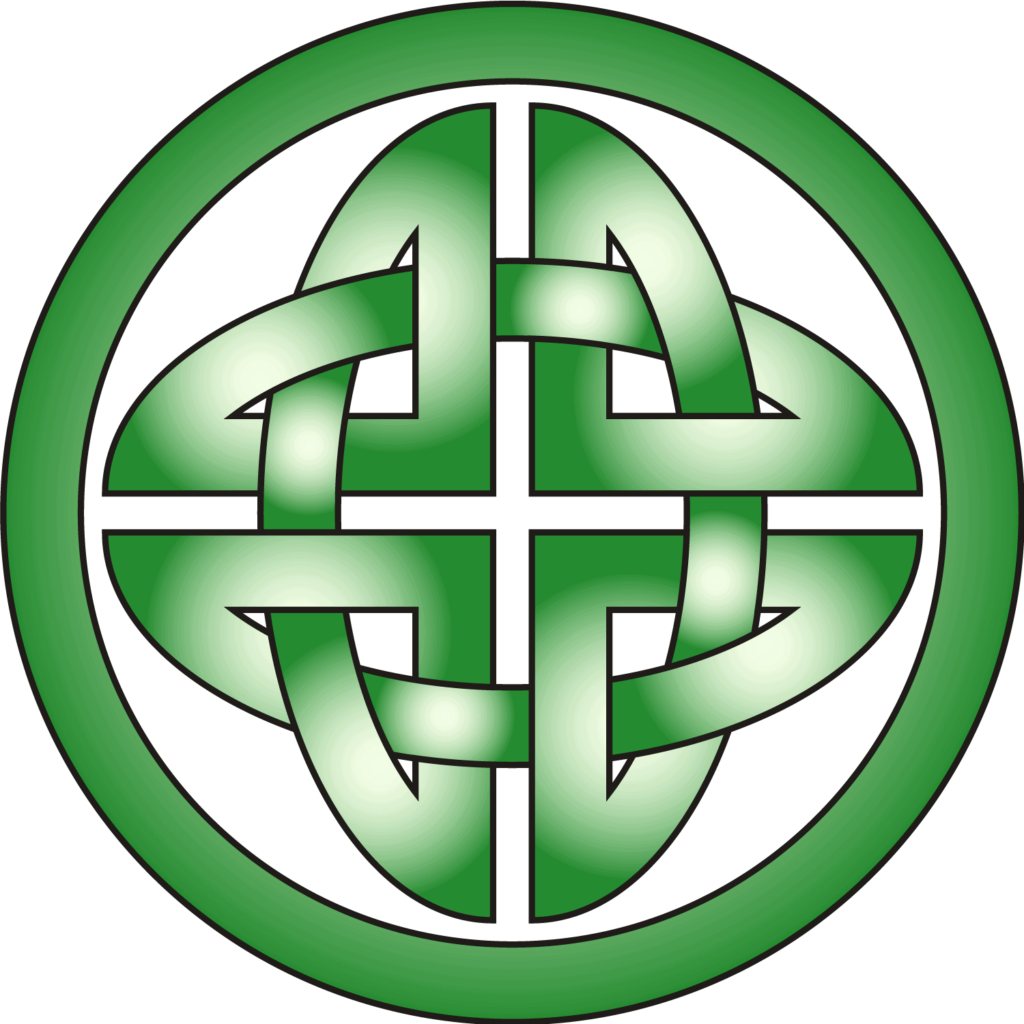
Origin: The Celtic Knot, also known as the “endless knot,” dates back to early Celtic art and manuscripts. These designs appeared prominently in manuscripts like the Book of Kells, dating from around the 9th century AD.
Celtic Knot Meaning: The interwoven lines of a Celtic knot have no beginning or end. A Celtic knot represents concepts of eternity and an infinite cycle of life. Furthermore, the Celtic knot’s continuous pattern suggests the connection between past, present, and future.
In modern times, the Celtic knot has become a popular symbol in various forms of art, jewelry, and decorative designs such as Celtic tattoos, often conveying a sense of heritage, tradition, and cultural identity.
2. Irish Symbols – Triskele (Triskelion)

Origin: The Triskele, or Triple Spiral, is an ancient Celtic symbol that predates Christianity. The most famous triskele is carved numerous times in and out at one of Irelands’ best attractions, the megalithic site of Newgrange, dating back to around 3200 BC.
Every year on December 21st, also known as the winter solstice, a beam of sunlight illuminates the entire chamber inside Newgrange. It’s mind-blowing how the ancient Celts built this wonder without modern tools or precise calculations and the reason Newgrange is one of the best places to visit in Ireland.

Witnessing this ancient Irish symbol in Newgrange ourselves was high on our Ireland bucket list and it did not disappoint (unfortunately, no photos were allowed inside the tomb.)
What is the Triskele Meaning: Although there is no exact answer for the meaning of a triskele, historians believe the three spirals symbolize the cycles of life (birth, life, and death). Similar to the Celtic knot, the Triskele represents the continuity and interconnected nature of life.
3. Irish Symbols – Claddagh Ring

Origin: The Claddagh Ring originates from the village of Claddagh, near Galway, Ireland. The design has been traced back to the 17th century.
Numerous legends surround its origin, but one of the most popular stories involves a silversmith named Richard Joyce. According to this tale, Joyce was captured by Algerian pirates and sold into slavery to a Moorish goldsmith, who taught him the art of metalworking.
When King William III arranged for the release of British captives from Algeria, Joyce returned to Galway with a ring he had created while in captivity. He gave this ring to his sweetheart, married her, and went on to become a successful goldsmith, marking his creations with his initials.
*Ireland travel tip – There is a pub in Baltimore, County Cork Ireland named “The Algiers”. It’s named after the capital of Algeria because, believe it or not, back in the day a lot of Irish people were kidnapped by Algerian pirates and sold into slavery. Most importantly, It does a good pint of Guinness!
Meaning: The Claddagh ring features two hands holding a heart with a crown. It symbolizes love (heart), friendship (hands), and loyalty (crown). Traditionally, the way the Claddagh ring is worn indicates the wearer’s relationship status.
When a Claddagh ring is worn with the heart facing outward, it symbolizes that the person is single and open to love. If the heart is facing inward, it indicates that the wearer is in a relationship.
Cool Ireland fact – Some famous wearers of the Claddagh ring include Queen Victoria, Princess Grace of Monaco, John F. Kennedy, and Elvis Presley.
4. Irish Symbols – Shamrock

Origin: The shamrock is a three-leafed clover native to Ireland. It has been associated with Ireland for centuries, with St. Patrick famously using it to convert the Irish into Christians, St. Patrick used the shamrock to explain the holy trinity with each leaf representing the Father, Son, and Holy Spirit.
What is the meaning of a Shamrock in Ireland: The shamrock represents luck, prosperity, and the Holy Trinity in Christian tradition. Don’t get confused between a shamrock and a clover. A fourth leaf is where Irish people get their luck from.
The shamrock has become a symbol of Irish identity and is often worn on St. Patrick’s Day.
If you would prefer a self-drive adventure and discover the Emerald Isle at your own pace, check out this ultimate 2-week Ireland road trip itinerary. We have done all the hard work for you so you can sit back, relax, and soak in all the best attractions and must-visit destinations in Ireland!
5. Irish Symbols – Celtic Cross
Origin: The Celtic Cross combines a Christian cross with a circle and is believed to have originated in Ireland in the 7th century AD.
The earliest crosses were not carved out of rock but were carved into it. It is thought that early Irish monks adapted the imagery of the sun god to represent Christ’s halo, using it as a means to explain Christian concepts to Celtic pagans.
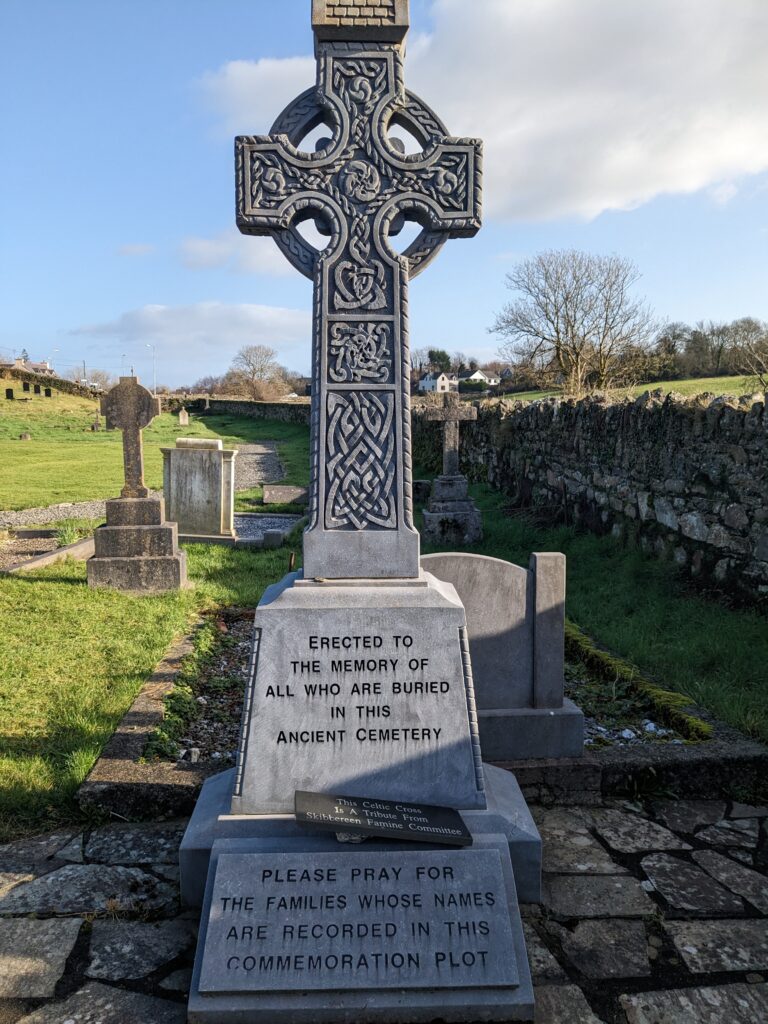
In the 9th and 10th centuries, Irish crosses evolved in both structural and artistic complexity, representing a significant contribution to European art during the Middle Ages.
Celtic Cross Meaning: The circle is thought to represent eternity and the divine, while the cross signifies the intersection of the earthly and spiritual realms. This Irish symbol reflects the merging of Celtic and Christian traditions.
While Celtic crosses were primarily used for religious instruction, they were also commonly placed outside the walls of monastic settlements to mark the boundaries of the monastery.
The Celtic revival in the latter part of the 19th Century saw a growth in the popularity of Celtic Crosses as headstones.
The best way to explore Ireland is by car – click to get a free quote for the best Car Rental in Ireland.
6. Irish Symbols – Leprechaun

Origin: Leprechauns are figures from Irish folklore, with their origins tracing back to pre-Christian Celtic mythology. They were later popularized in Irish folklore and fairy tales.
Most Leprechaun legends can be traced back to 8th-century tales of water spirits known as ‘luchorpán’, meaning ‘small body’. These spirits are believed to have merged with household fairies and developed a fondness for heavy drinking. Additionally, some researchers suggest that the term “Leprechaun” originates from the Irish phrase ‘leath brogan’, which means shoemaker.
As a result, leprechauns are a blend of these various mythical beings. They incorporate traits from each and have evolved into the most universally recognized Irish fairy.
Meaning of leprechauns: In most Irish folklore, the Leprechaun is portrayed as a cunning trickster who deceives at every opportunity. They are said to be frequently quarrelsome and foul-mouthed and their purpose is to test human beings on their greediness.

The more modern interpretation of a leprechaun as a cheerful little soul sitting on a toadstool is not authentic to Irish folktales.
Leprechauns are also associated with luck and are said to hide their pots of gold at the end of rainbows.
However, in most stories, the leprechaun manages to keep his pot of gold, while the human is left regretting their own stupidity for being tricked by the small, but clever mythical creature.
* Ireland Travel Tip – Did you know that there are no female Leprechauns?
7. Irish Symbols – Tree of Life

Origin: The Tree of Life symbol is ancient. In fact, this iconic Irish symbol is almost as old as humans and appears in various cultures, and not only Celtic art. In Irish culture, it is prominent in manuscripts and Celtic art from the early medieval period.
Tree of Life Meaning: This Celtic symbol represents the interconnectedness of all life and the balance between different realms of existence. It reflects the idea that all elements of the universe are interconnected and that life is a continuous cycle.
Celts hold trees in high regard for their spiritual ties to family, and ancestors. The Tree of Life symbolizes the afterlife and the connection between earth and heaven.
The Celts’ deep bond with trees led them to believe that trees themselves were their ancestors and gatekeepers to the Celtic Otherworld. Consequently, the Tree of Life is considered sacred in Celtic culture, known in Irish as ‘Crann Bethadh’.
8. Irish Symbols – Irish Harp
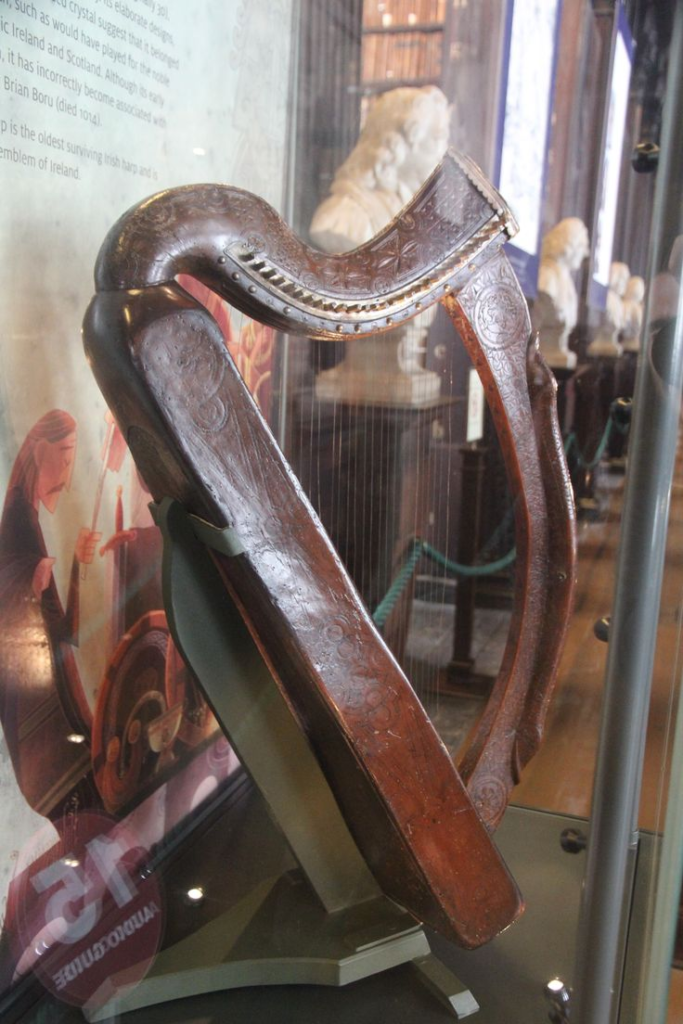
Origin: The instrument was introduced to Europe by the Phoenicians who brought it from Egypt.
The Irish harp is a stringed musical instrument that’s said to be one of the oldest in the world. The Irish Harp has been a symbol of Ireland since at least the 11th century. It was used by musicians in ancient times and later became the national emblem, based on the Brian Boru Harp, the legendary High King of Ireland.
This Irish harp is also known as the Trinity Harp and one of the most famous harps is on display in Trinity College, Dublin.
*Fun Ireland fact – Ireland holds the distinction of being the only country in the world with a musical instrument as its national symbol.
Meaning: The harp represents Ireland’s rich musical heritage and is a symbol of Irelands’ history and cultural identity. The harp has since become a symbol of Irish nationalism and resistance against British rule early on in the establishment of Ireland as a free state.
During the 1500s the harp was seen as a threat to the British Crown because it was such a source of pride and hope for the Irish. Harps were ordered to be burnt, while harpists were condemned and executed. It took almost 200 years before the harp was heard and enjoyed in Ireland once again.
The harp, both as a musical instrument and as Ireland’s national symbol, played an important part in the long, turbulent history of Ireland.
You might recognize another important Irish Harp…
The Irish Harp is the national symbol of Ireland and appears on Irish coins, the Presidential Seal, the Irish passport, and the coat of arms. The instrument’s association with Ireland dates back to the 1500s. However, the harp is officially recognized as the national symbol only when depicted in a ‘left-facing’ position.

The reason for this specific orientation is linked to the famous Irish beverage company, Guinness. In 1922, when Irish officials sought to register the harp as the national emblem, they were advised that only a left-facing harp could be used. This restriction was due to Guinness already having registered a right-facing harp as their trademark, which they had been using since 1862.
But who wants to just talk about Guinness when you can taste it for yourself? The Guinness Storehouse is Ireland’s most visited attraction and a must-visit experience in Ireland. Located in Dublin, the 7-storey building offers a journey through the rich history and heritage of the most famous stout in the world. Be sure to book your tickets in advance as it’s extremely popular and often sells out.
9. Irish Symbols – Brigid’s Cross

Origin: Brigid’s Cross originates from pre-Christian pagan traditions and was later incorporated into Christian practices. It is named after St. Brigid of Kildare, a key figure in Irish Christianity who lived in the 5th-6th centuries AD.
Meaning of Brigid’s Cross: The cross is traditionally woven from rushes and symbolizes protection and blessings. It is associated with St. Brigid, the patron saint of healers, poets, and blacksmiths. The cross is often hung in homes to ward off evil and bring good fortune.
St. Brigid is celebrated on the 1st of February and marks the beginning of spring. To many Irish people’s delight, St Brigid is now a public holiday in Ireland.
We spent many years making St. Brigid’s Crosses in school!
If you want to learn more about Ireland’s history, check out the post on the Greatest Megalithic sites in Ireland below:
10. Irish Symbols –The Salmon of Knowledge

Origin: This symbol comes from Irish mythology, particularly the Fenian Cycle, which dates back to the early medieval period.
Meaning: The Salmon of Knowledge is a mythical creature, said to possess all the knowledge of the world.
In Irish mythology, the first creation was a hazel tree, which held all the universe’s knowledge. This tree grew over the Well of Wisdom (Tobar Segais), where a salmon consumed the hazelnuts, gaining all the wisdom. It was foretold that whoever ate the salmon would acquire this knowledge, and it was predicted that Fionn would be the one to do so.
After seven years of fishing, the poet Finnegas finally caught the salmon and instructed his apprentice, Deimne Maol, to cook it. Deimne accidentally burned his thumb on the fish and, while soothing the pain, tasted it, thus gaining the wisdom. Finnegas noticed a change in Deimne but was unaware that Deimne’s other name was Fionn meaning “fair-haired one.”
This newfound wisdom allowed Fionn mac Cumhaill to lead the Fianna – a band of warriors responsible for the safety of the High King of Ireland.
This Irish symbol represents the pursuit of knowledge and wisdom.
11. Irish Symbols –The Green Man

Origin: The Green Man is a symbol that appears in ancient cultures across Europe, including Celtic traditions. It is often seen in medieval architecture, particularly in church carvings from the 12th century.
Meaning: The Green Man represents the spirit of nature and the changing seasons. He is typically depicted as a face surrounded by or composed of foliage, symbolizing rebirth, growth, and the cyclical nature of life.
The Green Man is mainly associated with the symbol of rebirth, representing the cycle of growth each spring. Some say he is the ancient guardian of the forest and Celtic tradition was deeply connected to the fertility of the land.
The Catholic Church welcomed this Celtic symbol because it represents themes of death and rebirth, which align with the message of Jesus Christ. By adopting the Green Man, the church saw an opportunity to spread Christian teachings through familiar symbols.
Rather than repurposing the Green Man, the church incorporated this symbol into its architecture. In fact, many European churches feature Green Men hidden around their walls and ceilings. Next time you visit one, take a closer look – you might be surprised by how many you find.
Ireland Travel Tip – Learn even more about Ireland with our best Irish Blessings and Irish Phrases posts.
12. Irish Symbols – The Ogham Alphabet

Origin: The Ogham alphabet, or Ogham script, was used in Ireland and parts of Britain from the 4th to the 7th centuries AD.
An alphabet of 20 letters is represented by notches for vowels and lines for consonants and which is known primarily from inscriptions cut on the edges of rough standing tombstones

Meaning of Ogham Alphabet: The script consists of marks or lines along a central line, used primarily for carving inscriptions on stone. It is associated with early Irish languages and provides insight into early Irish culture and society.
County Kerry is home to many fascinating Ogham stones, and most are free attractions to visit in Ireland.
Ireland Travel Tip – Planning a trip to Ireland? To help you prepare, don’t miss our guide to the 10 most beautiful towns to visit – plus a collection of the best Irish insults that’ll have you laughing out loud and ready to dive into the lively pub culture!
13. Irish Symbols –The Druid’s Knot (Triquetra)
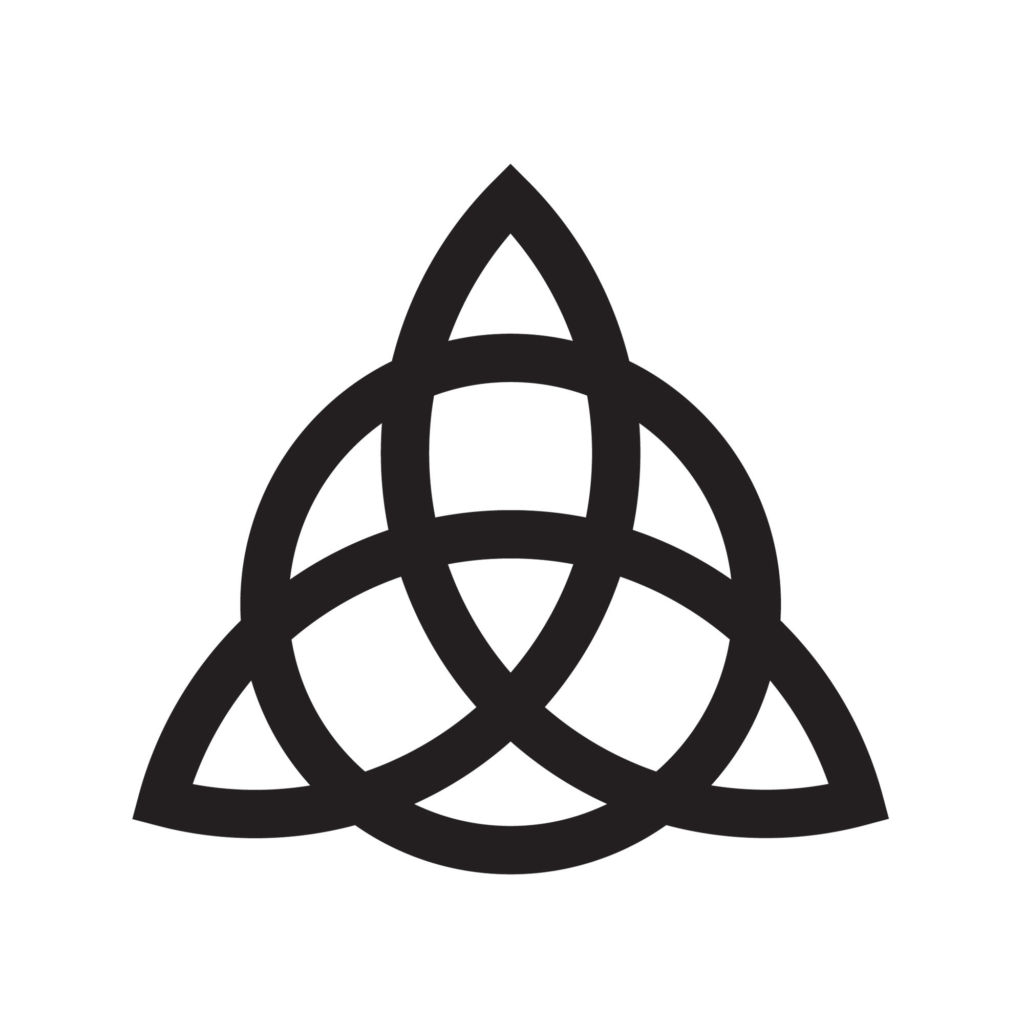
Origin: The Triquetra, also known as the Druid’s Knot, has ancient roots in Celtic art and symbolism, found in artefacts and manuscripts from the early medieval period.
Triquetra Meaning: Similar to the Triskelion, historians believe that this three-cornered knot frequently symbolizes the concept of life, death, and rebirth.
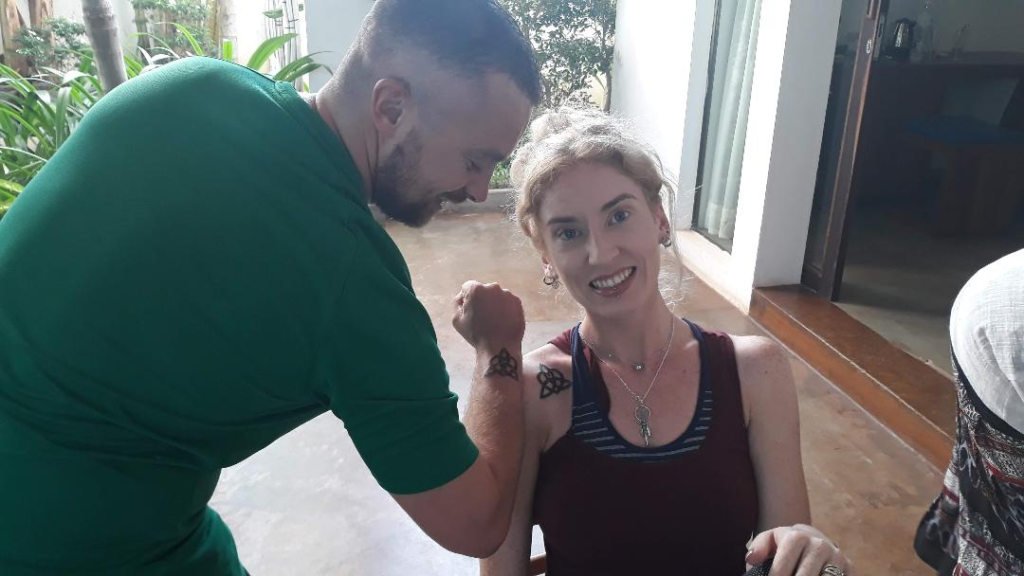
All these stunning Irish symbols truly capture the essence of Ireland’s historical and cultural legacy, reflecting its ancient roots and enduring traditions.
Now, the Most Important Question…
There you have it, our most meaningful and famous Irish symbols.
But now for the most important question, which one are you getting tattooed?!
Ireland Travel Tip – Even with the luck of the Irish, things can still go wrong. World Nomads Travel Insurance is our top choice for travel coverage. With the best transparent fine print in the industry, it’s no wonder they’re ranked number one. Don’t leave your adventures to chance and get the protection you need today!
Connect With You Own Irish Symbol
Sharing these Irish symbols allows us to honor our heritage while bringing positivity into the lives of others. Win, win!
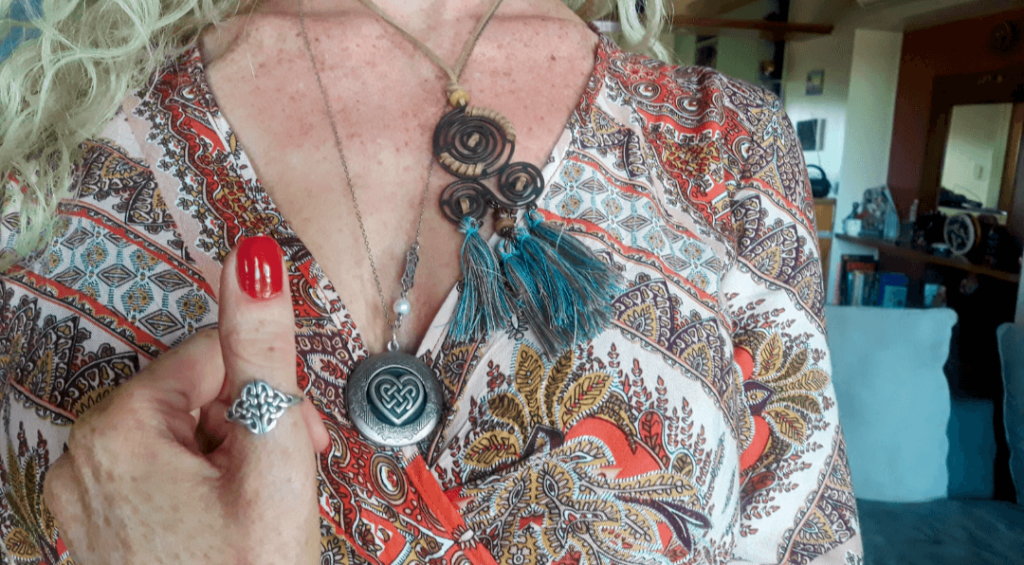
Each Irish symbol holds a vital place in Irish history, with each offering a meaningful story attached which holds as much importance in our lives today as it did in ancient Irish times. Now that makes for pretty impressive Irish icons. So, which Irish symbol do you connect most with?
We hope you learned some new Irish symbols. Which are your favourite Irish symbols? Are there any other Irish symbols you would add to the list?
If we have left anything out please let us know. We would love to hear from you.
Feel free to leave a message below or contact us on our socials.
Slán go fóil
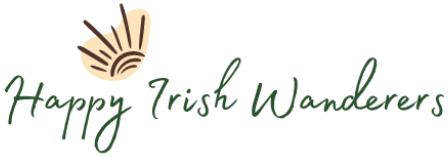
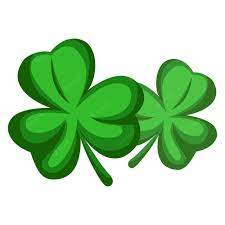
This post contains affiliate links. If you click on the links to make a purchase, we will earn a small commission. This is at NO EXTRA COST to you. This is a free way to support us and allow us to continue to create inspiring adventure travel guides.
